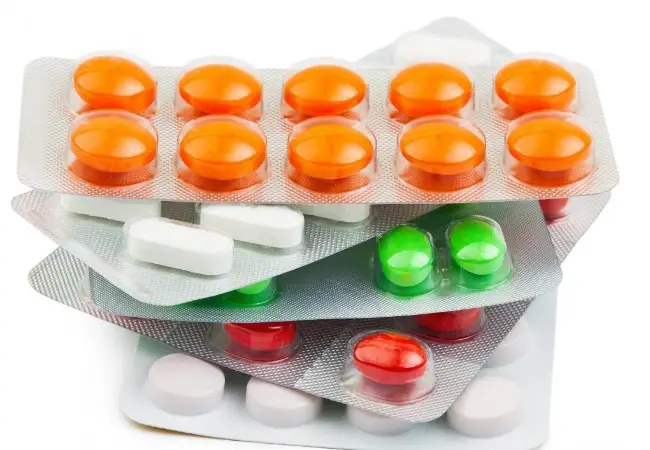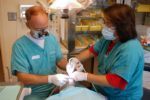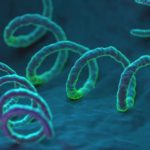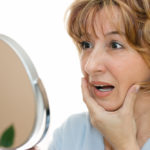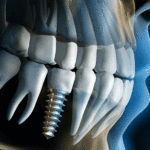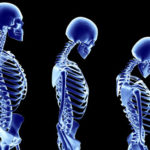Table of Contents
Allergy (Greek: allos – other, ergein – work) indicates a hypersensitivity reaction of the organism to non-infectious, for health otherwise harmless substances (antigens, allergens). Many of these substances come from the environment. An allergic reaction may cause local or general (systemic) symptoms. Local symptoms are limited to the organ or organ system through which the allergen entered the body, while the general symptoms manifest themselves at the level of the whole organism. Symptoms of mild reactions can be rhinitis, conjunctivitis, urticaria and the like. Severe reactions such as anaphylaxis and angioneurotic edema may lead the body into a state of shock, and in the absence of untimely and inadequate treatment can lead to death.
Allergies are very common reactions of the organism and almost every person throughout life has experienced an allergic reaction. Allergies are more common in younger people, especially in developed countries among the urban population. It is believed that allergic diseases occur in 5 to 10% of the population. Research has shown that even 15 to 25% of Americans are sensitive to certain substances (for example the frequency of allergic rhinitis is estimated at 7-10% of the total USA population).
 There is no unambiguous and complete answer to what causes increase in the number of allergic individuals. According to interpretations of some experts find the culprit can be found in the food, especially in a number of additives that are added to foods and in genetically modified food. However, the explanation is likely much wider and more complex.
There is no unambiguous and complete answer to what causes increase in the number of allergic individuals. According to interpretations of some experts find the culprit can be found in the food, especially in a number of additives that are added to foods and in genetically modified food. However, the explanation is likely much wider and more complex.
One of the most common emergency situations that may occur in the dental office is an acute allergic reaction. Therefore, in order to prevent unwanted and sometimes life-threatening situations that may result from this condition, the dentist should know and be able to:
- identify the patient who has a tendency to have this condition,
- recognize changes in the soft oral tissues resulting from reactions,
- modify the plan of dental treatment in immunocompromised and sensitive patients,
- recognize the signs and symptoms of acute reactions, and take appropriate therapeutic measures.
Allergic reactions that may occur in the dental office are usually associated with local anesthetics, antibiotics, analgesics and the ingredients of dental materials. If the patient has before undergone some form of reaction, he must thoroughly inform the dentist about it. On the basis of these information, the dentist should conclude if this is the true reaction or some of the conditions that are similar to allergies.
The symptoms that always accompany this condition, and may occur alone or in combination are:
- urticaria (a rash of round, red welts on the skin that itch intensely),
- swelling,
- skin rash,
- chest tightness,
- dyspnea (difficult or labored breathing),
- rhinorrhea (a condition where the nasal cavity is filled with a significant amount of mucus fluid),
- conjunctivitis (inflammation of the conjunctiva of the eye).
 Local anesthetics
Local anesthetics
While many patients worriedly inform their dentists that they may be sensitive to local anesthetics, true allergic reactions to local anesthetics that are now commonly used in dentistry (local anesthetics of the amide groups) are relatively rare. The reactions induced by intravenous injection of a local anesthetic or reaction to the vasoconstrictor in the local anesthetic can cause symptoms that are often replaced with allergic reactions. Besides, patient who is afraid of dental procedure or needle when applying local anesthetic, because of his fear often begins to sweat, become pale and his heart starts to pound, which can be misinterpreted as allergy to local anesthetics. But if the aforementioned causes are excluded, and prior medical history is warning of the real allergy to local anesthetics or their ingredients, the dentist needs to know what kind of anesthetic a patient is sensitive to and find a suitable replacement. If it is determined that the patient is allergic to local anesthetics of the ester group (e.g. tetracaine or procaine), then the anesthetic from this group needs to be replaced with one of the anesthetic from the amide group.
- PREMIUM QUALITY: A combination of premium texture and granule size made with 100% bentonite clay for maximum clumping creates litter particles that are just the right size.
- LOW DUST: Ideal for cats and owners who suffer from allergies with a 99.9% dust-free and hypoallergenic litter formulation.
- HARD CLUMPING: Hard clumping medium grain clay helps prevent moisture from reaching the bottom of the tray and forms hard clumps that won't break down, making it easier to scoop.
- SUPERIOR ODOR CONTROL: Formulated for single or multi-cat households with natural ingredients to keep your home smelling clean and fresh between litter box cleanings.
- LOW TRACKING: A unique formulation of medium grain clay helps keep litter in the box where it belongs.
- EYE DROPS FOR RED EYES: LUMIFY redness reliever eye drops significantly reduce redness to help reveal your eyes' natural radiance. From the eye care experts at Bausch + Lomb, LUMIFY works in 1 minute & lasts up to 8 hours.
- LUMIFY IS DIFFERENT: LUMIFY eye drops are one of a kind. LUMIFY is the only over-the-counter drop that contains the active ingredient brimonidine, which works to selectively target redness, alleviating some of the potential side effects associated with other redness relievers, when used as directed.
- FDA APPROVED: LUMIFY contains no bleach or dyes and is FDA approved. LUMIFY eye drops significantly reduce redness to help eyes appear whiter, brighter, and more radiant. It’s the #1 Eye Doctor recommended redness reliever (based on IQVIA survey)
- WHAT CAUSES EYE REDNESS? Eye redness, unrelated to infection or injury, is a common condition that can be caused by eye fatigue, dryness or dust, overexposure to the sun, allergies, swimming in chlorinated pools, or contact lenses.
- AMAZING LOOKING EYES: We understand how important eyes are. And despite all the eye creams, mascara, eye-liners and shadows, if your eyes are red, you won’t look your best.
- [ HYALURONIC ACID MOISTURIZER ] With hyaluronic acid, ceramides and MVE technology for 24 hour hydration. Rich, velvety texture that leaves skin feeling smooth, it is absorbed quickly for softened skin without greasy, sticky, feel.
- [ MOISTURIZER FOR DRY SKIN ] A deficiency of ceramides in skin can often be associated with dry skin, which can feel itchy and look flaky. CeraVe Moisturizing Cream is formulated with three essential ceramides & hyaluronic acid.
- [ GENTLE DAILY MOISTURIZER ] For face and body or can be used as a hand cream for dry skin relief. Holds National Eczema Association (NEA) Seal of Acceptance. Fragrance free, paraben free, allergy-tested, and non-comedogenic.
- [ 3 ESSENTIAL CERAMIDES ] Ceramides are found naturally in the skin and make up 50% of the lipids in the skin barrier. All CeraVe products are formulated with three essential ceramides (1, 3, 6-II) to help maintain the skin’s natural barrier.
- [ DEVELOPED WITH DERMATOLOGISTS ] CeraVe Skincare is developed with dermatologists and has products suitable for dry skin, sensitive skin, oily skin, acne-prone, and more.
Namely, if the patient is sensitive to one of the ester anesthetics, then he is allergic to all anesthetics from the ester group. On the other hand, if there is an allergy to one of the anesthetic of the amide group (e.g. lidocaine, mepivacaine or prilocaine), there is only an allergy to a specific anesthetic, and not the whole group. So, it is possible that contraindicated amide anesthetic to be replaced by another amide anesthetic. When applying articaine the dentist should be especially careful because it is the amide anesthetic with an ester group which can easily cause allergic reaction.
The patients may also be allergic to the substances that are added to local anesthetic to improve their properties, such as methylparaben, bisulfite and the like. In this case only anesthetics that do not contain these potential allergens should be applied .
In situations where it is not possible to determine on which anesthetic or its ingredient the patient is allergic to (which one caused an the condition during past dental treatment), one solution is to refer the patient to the allergy testing. The patient should be explained that the testing is necessary because repeated acute allergic reaction may be fatal.
Antibiotics
Penicillin, as one of the best known and most widely used antibiotics, often causes the condition. It is estimated that penicillin and its derivatives cause allergic reactions in 5 to 10% of patients, of which 0.04 to 0.2% of the cases are in form of anaphylactic reactions.
Likelihood that it will come to sensitizing of the organism to penicillin depends on the route of administration. Oral application results in sensitization in about 0.1% of the patients, while the surface application of penicillin (e.g. ointment placed on the skin) causes sensitization in 5 to 12% of patients. Therefore, it is always recommended oral application, followed by intramuscular injection.
If a patient knows that he is allergic to penicillin, then he must inform the dentist, who will, if necessary, instead of penicillin preparations rewrite erythromycin or clindamycin. Antibiotics that can show cross-reaction, such as ampicillin, carbenicillin and methicillin should also be avoided. In situations when penicillin is the first choice of treatment, and there is a suspected allergy to penicillin, allergy testing is recommended.
In patients with no medical history of allergy to penicillin, it can be administered orally. After the first dose, the patient should be monitored for thirty minutes in order to note in time and take care of possible allergic reaction.
 Analgesics
Analgesics
The best known and most frequently used analgesics are probably those that contain aspirin. It is found that at 2 in 1,000 people can cause reactions, which can be very serious and sometimes even fatal.
Acetylsalicylic acid, as well as most non-selective NSAIDs, inhibits the enzyme cyclooxygenase in preventing the formation of prostaglandins and thereby achieves its analgesic effect. Inhibition of production of prostaglandins leads to creating of leukotrienes which may cause acute bronchospasm (temporary narrowing of the bronchi – airways into the lungs caused by contraction of the muscles). Due to a severe condition characterized by acute bronchospasm, rhinorrhea and urticaria, it is not recommended to use these analgesics in people who suffer from asthma. Moreover, these patients should avoid taking any analgesic which contains acetylsalicylic acid or some other salicylate. Paracetamol based analgesics are considered to be analgesic of choice in danger of allergic reactions to aspirin and/or NSAIDs.
Other dental materials which can cause an allergic reaction
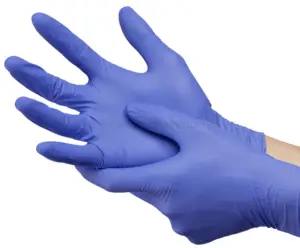 In both the members of the dental team and patients there have been many instances of allergic reactions related to contact with items containing rubber or latex, such as protective rubber dum used in endodontics (root canal treatment) and latex gloves. In this type of hypersensitivity, in case of doubt all materials and the equipment containing rubber or latex should be avoided.
In both the members of the dental team and patients there have been many instances of allergic reactions related to contact with items containing rubber or latex, such as protective rubber dum used in endodontics (root canal treatment) and latex gloves. In this type of hypersensitivity, in case of doubt all materials and the equipment containing rubber or latex should be avoided.
The solutions for mouthwash and toothpastes which contain phenol, antiseptics or flavoring ingredients, can also cause a hypersensitivity reaction, which is preferably manifested on the oral mucosa or on the lips.
Dental materials and their components, such as dental amalgam, acrylic, composite, nickel, eugenol and talc are also known as potential allergens.
Oral manifestations of allergic reactions
In so called type I hypersensitivity reactions (immediate hypersensitivity reaction) in the oral cavity oral lesions, hives, swelling or angioneurotic edema may occur. After contact with an allergen, hypersensitivity reaction develops rapidly. Painless swelling of the soft tissues in the oral cavity may be accompanied by unpleasant burning sensations. Oral lesions usually last 1-3 days, after which spontaneously heal. In the treatment oral antihistamines are applied, and re-contact with the allergen should be avoided.
 In the hypersensitivity reaction type III (immune antigen-antibody complexes are formed) in the oral cavity white, erythematous (red) or ulcerative lesions may appear. These lesions occur within 24 hours after contact with an allergen. There have been many cases of this type of hypersensitivity in patients with orthodontic appliances that were sensitive to nickel in orthodontic wires.
In the hypersensitivity reaction type III (immune antigen-antibody complexes are formed) in the oral cavity white, erythematous (red) or ulcerative lesions may appear. These lesions occur within 24 hours after contact with an allergen. There have been many cases of this type of hypersensitivity in patients with orthodontic appliances that were sensitive to nickel in orthodontic wires.
Contact stomatitis is delayed allergic reaction (hypersensitivity reaction type IV) resulting from activation of the cellular immune system. It is manifested by the appearance of inflammatory lesions on the oral mucosa after contact with an allergen. Allergens can be dental materials (such as amalgam, composites, adhesives, acrylates, nickel, gold, mercury, palladium, etc.), materials for taking impressions, whitening gels, toothpastes and mouthwash solutions. After discovering the cause of hypersensitivity reaction, the dentist should avoid using material that caused the problem.
Conclusion
Allergic reactions are relatively common complications that can occur during dental treatment and after dental care. The reaction of the organism to an allergen can be mild, but also very strong and even life-threatening. The dentist should always be alert to the previous conditions to avoid unwanted situations and prevent unpleasant consequences. When necessary, the dentist can modify planned dental treatment in order to minimize the risk of future conditions.





